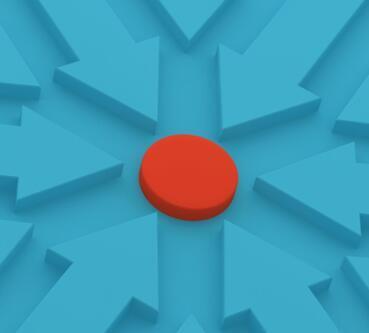
Expert Insights
The Science of Acupuncture: A Modern Treatment Rooted In Deep History
The Science of Acupuncture: A Modern Treatment Rooted In Deep History
The well-preserved frozen mummy of a man from the Copper Age (3350-3105 BC), known as the Otzi Iceman, was discovered in the Alps at the Austria-Italy border in 1991. The mummy displayed tattoos on parts of the body corresponding to areas of injury, aligning with modern acupuncture meridians. Scientists speculate that this could represent predating Chinese acupuncture by 2,000 years. The real development of acupuncture, however, occurred in China, where the philosophical and theoretical medical framework was established. The Yellow Emperor’s Classic of Medicine (475-221 BC) is the earliest documented compendium on the subject, consisting of two books: the first covers medical theory, while the second focuses on acupuncture.
Chinese medicine views all ailments as the result of an imbalance in Qi (pronounced “chee”), the body’s vital force. Acupuncture is a traditional Chinese medicine technique that involves inserting thin needles into specific points on the body along the pathway of Qi (known as meridians) to stimulate the flow of energy (Qi), promote healing, re-balanced energy, and restoring well-being. It is used to manage various conditions, including pain, nausea, and stress. In lieu, humans of all ages-and even mammals- can benefit from acupuncture.
Since the 1970s, acupuncture has risen rapidly and become more and more popular in Western countries. Acupuncture was recommended as a treatment for 43 diseases by the World Health Organization (WHO) experts in 1979. In 1998, the National Institutes of Health consensus conference concluded that “promising results have emerged, for example, demonstrating acupuncture’s efficacy in adult postoperative and chemotherapy nausea and vomiting, as well as in postoperative dental pain”. There are additional circumstances, such as addiction, stroke rehabilitation, headache, menstrual cramps, tennis elbow, fibromyalgia, myofascial pain, osteoarthritis, low back pain, carpal tunnel syndrome, and asthma, in which acupuncture may be beneficial as an adjunct treatment or an acceptable alternative or as part of a comprehensive management program. The WHO Consultation on Acupuncture published a review of 225 clinical trials in 2002, concluding that acupuncture was effective for 28 diseases and beneficial for 63 others.
Acupuncture serves both preventive and curative purposes. It strengthens Qi to promote overall health and treats various conditions, particularly chronic and debilitating diseases, long-term complications, and pain of any origin. As with any medical treatment, acupuncture has potential side effects. These may include fainting during the first session (often due to fear of needles), dizziness, minor bruising at needle insertion sites, and in rare cases, lung or organ puncture- especially if performed by an untrained practitioner. Despite these risks, acupuncture is widely regarded as safe and virtually painless, as demonstrated in numerous clinical trials.
A typical acupuncture session begins with a medical interview and assessment to diagnose the patient’s condition. Based on this evaluation, treatment may include acupuncture and complementary modalities such as cupping (vacuum therapy), moxibustion (heat therapy), infrared heat lamps, electrical stimulation or Tui Na (therapeutic massage). During needle insertion, patients often feel a slight prick, followed by sensations of heaviness, tingling, warmth, coldness, movement or even a brief jolt- referred to as the “arrival of Qi”. Pain, however, should not be experienced. For those who fear needles, alternative methods like low-energy lasers or ear seeds (used in auricular acupuncture) provide non-invasive options.
Acupuncture was introduced to the United States of America after President Richard Nixon’s visit to China in 1972. Since then, it has grown steadily in the healthcare system and gained popularity among the public as a reliable, effective, affordable, and low-risk therapy- particularly appealing to those seeking to reduce dependence on pain medications. While acupuncture can be a helpful addition to treatment plans for some conditions, it's not a cure-all and may not be effective for everyone. In conclusion, acupuncture is a valuable tool for pain management and may offer benefits for certain health conditions. However, more high-quality research is needed to fully understand its mechanisms and determine its effectiveness for a wider range of ailments. Acupuncture is generally considered safe, but it's crucial to seek treatment from a qualified and licensed practitioner before doing the treatment to minimize risks and complications like infection or nerve damage that is harmful on our body. We should always remember that our body is a temple of the holy spirit and we are called to take care of and honored our body as a gift from God.
Neri Torrato Camina Jr, BSN,RN
Florida









